Long Beach is located about 30-40 minutes south of downtown Los Angeles – note that the metro also runs down to Long Beach servicing several stops. Long Beach is also a departure point by ferry or helicopter to Catalina Island. The Ports of Long Beach and Los Angeles are among the world’s busiest.
 From the end of the 110 Freeway in nearby San Pedro across the green Vincent Thomas Bridge (or blue at night lit up by hundreds of LED lights) and then continuing to where you hook up with the 710 freeway (before it turns north) – for several miles you will be in a vast and ever changing landscape of cargo ships, cranes and thousands upon thousands of containers from around the world as well as bound to locations around the world (many to and from China). A lot of waste material from Los Angeles is in fact shipped to China where its made into new products and shipped back again to be sold in the USA!
From the end of the 110 Freeway in nearby San Pedro across the green Vincent Thomas Bridge (or blue at night lit up by hundreds of LED lights) and then continuing to where you hook up with the 710 freeway (before it turns north) – for several miles you will be in a vast and ever changing landscape of cargo ships, cranes and thousands upon thousands of containers from around the world as well as bound to locations around the world (many to and from China). A lot of waste material from Los Angeles is in fact shipped to China where its made into new products and shipped back again to be sold in the USA!
Long Beach downtown (the tall buildings) is situated along East Ocean Blvd – and if you keep driving East on this blvd through downtown you can fairly quickly escape the urban highrises and you will arrive at Bluff Park – a green walkway next to the road with a very long somewhat white colored beach below.
Please review several of the area attractions or museums that we have visited to date.
Aquarium of the Pacific is situated on Long Beaches’ harbor front at 100 Aquarium Way and is one of the main attractions in Long Beach. Take the 710 freeway west and follow the signs that lead to this Aquarium. This is a big family attraction and you will often see parents with kids here. This aquarium has over 12,500 animals displayed in over 50 exhibits. One of our favorite exhibits is their jellyfish and California venomous creatures. Here you see huge poisonous ants, close-up of many species of jellyfish and several reptiles. A highlight for the kids is to watch the scuba divers in the larger tanks feeding the fish.
Sometimes the divers will play “rock paper scissors” with the kids through the glass walls! Outdoor feeding times, weather permitting, are popular with the crowds. Several tanks are touch only and you can reach down to touch the manta rays and other fish. A huge Octopus is located in one tank and really attracts the crowds. An “aquarium passport book” is given with all paid admissions and you can go around to the main exhibits and use their passport machine to put a stamp in your booklet. Very touristy restaurants are located nearby on the waterfront. Open 7 days a week, 9-6pm. Visit: www.aquariumofpacific.org For information about what to do along the Long Beach Harbor front visit: www.thepikeatlongbeach.com or www.shorelinevillage.com
Long Beach Museum of Art
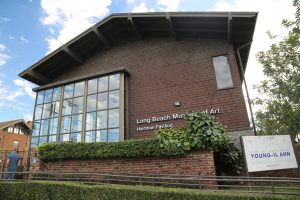 The Long Beach Art Museum is located 2300 E. Ocean Blvd – and as the name indicates, has views of the bay and the ocean in the distance. A small parking lot (free parking) is located about a block west of the actual museum. There are actually two buildings here both titled “Long Beach Art Museum” – one however is the fairly large restaurant and Claire’s Cafe and the other is the actual art museum (with 2 stories – several rooms and galleries on each floor). The cafe is definitely a step up in food quality from what you normally find at a museum cafe. Indoor or outdoor seating is available. The focus here is on modern and contemporary art pieces.
The Long Beach Art Museum is located 2300 E. Ocean Blvd – and as the name indicates, has views of the bay and the ocean in the distance. A small parking lot (free parking) is located about a block west of the actual museum. There are actually two buildings here both titled “Long Beach Art Museum” – one however is the fairly large restaurant and Claire’s Cafe and the other is the actual art museum (with 2 stories – several rooms and galleries on each floor). The cafe is definitely a step up in food quality from what you normally find at a museum cafe. Indoor or outdoor seating is available. The focus here is on modern and contemporary art pieces.
Once every two years prominent local artists donate their artworks and every piece on display in the museum is open for bidding. Odd to be in a museum and see “bid cards” hanging on the walls next to every piece! Allow under an hour here. Visit: www.lbma.org
Museum of Latin American Art
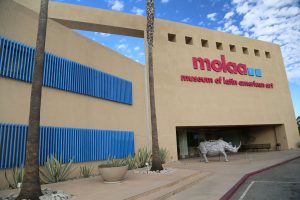
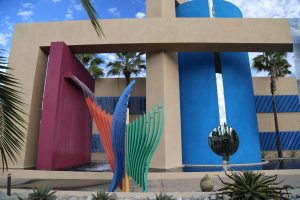 is located at 628 Alamitos Avenue in Long Beach. This is a historic site in Long Beach having served as home for a silent movie studio as well as the old Hippodrome roller skating rink. The museum looks rather large from the outside but the select galleries inside contain well spaced out exhibits and artwork. There is plenty of parking on site (in front of the entrance to the museum). This is the only museum in the USA devoted to modern and contemporary Latin art.
is located at 628 Alamitos Avenue in Long Beach. This is a historic site in Long Beach having served as home for a silent movie studio as well as the old Hippodrome roller skating rink. The museum looks rather large from the outside but the select galleries inside contain well spaced out exhibits and artwork. There is plenty of parking on site (in front of the entrance to the museum). This is the only museum in the USA devoted to modern and contemporary Latin art.
The range of art is extremely eclectic from a video of a man slowly destroying a pinata created in his likeness on his birthday to a woman drenching herself in blood and then rolling around in feathers near a lake (odd, very much so!). Video makes up a portion of the exhibits – galleries show rotating exhibits as well as art from the permanent collection. A sculpture garden is outside behind the museum. Artists from twenty countries are exhibited – these artists are well-known in their home countries but little known in the USA.
The founder, Dr. Gumbiner also introduced the much smaller Pacific Island Ethnic Art Museum (just down the street). You can call in from your cell phone for voice narration relating to a number of the art pieces on display – using (562) 481-3812. A small cafe is on site. Allow up to an hour. Visit: www.molaa.org
Pacific Island Ethnic Art Museum
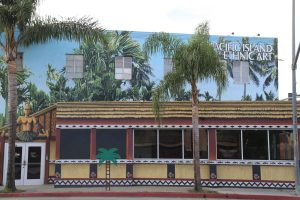
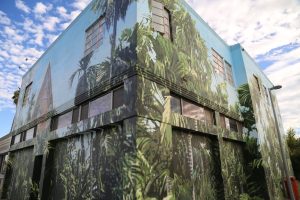 is located at 695 Alamitos Ave in Long Beach. A tiny parking lot for museum attendees is across from the main entrance on Alamitos Ave. The museum and the small outdoor sculpture garden are triangled in between where Alamitos Ave hits 7th Street. This very compact museum focuses on the culture and artwork of the Pacific Islands. The museum is the inspiration of Dr. Robert Gumbiner who founded a health maintenance company was introduced to the art of remote Pacific Islands while traveling in the region for business.
is located at 695 Alamitos Ave in Long Beach. A tiny parking lot for museum attendees is across from the main entrance on Alamitos Ave. The museum and the small outdoor sculpture garden are triangled in between where Alamitos Ave hits 7th Street. This very compact museum focuses on the culture and artwork of the Pacific Islands. The museum is the inspiration of Dr. Robert Gumbiner who founded a health maintenance company was introduced to the art of remote Pacific Islands while traveling in the region for business.
Dr. Gumbiner also founded the much larger Museum of Latin American art (just down the street). Talk about totally different museums and types of art! Allow 20-30 minutes. A small gift shop is on site. It was a visit here that first inspired us to plan our trip to Papua New Guinea. Visit: www.pieam.org
Queen Mary is located at the south end of the 710 freeway – simply follow the signs for parking. This majestic ship is somewhat showing its age (upon close inspection only). From afar it looks pristine and towers over the Long Beach Harbor, like the queen she is. She has been berthed here since the late 1960’s. Tickets to board the Queen Mary start at around $35 per person – however look in the local tourist guides for discounted coupons, and also ask at the ticket counter if they can honor coupon prices, even if you are not carrying one. Higher priced tickets are available as often there more exhibits on or near Queen Mary that the general admission ticket does not give you access to.

 Typically you would want to start your self-guided tour in the great engine room. This is worth visiting – its like 4 or 5 stories deep, and you walk down walkways straight into the guts of the engine. Even though the Queen Mary has not left Long Beach in many years, the engine room still has that wonderful musty smell of oil and gas. There is a an exhibit room above the engine that you may want to stop in. It displays Queen Mary mementos and has a good written and pictorial history of the ship.
Typically you would want to start your self-guided tour in the great engine room. This is worth visiting – its like 4 or 5 stories deep, and you walk down walkways straight into the guts of the engine. Even though the Queen Mary has not left Long Beach in many years, the engine room still has that wonderful musty smell of oil and gas. There is a an exhibit room above the engine that you may want to stop in. It displays Queen Mary mementos and has a good written and pictorial history of the ship.
Once on board, you are free to wander around the public areas – this includes the top decks, the captains control room in the front of the ship, the big ballroom, and many other places (there are 8 decks open to the public and will be highlighted on a brochure given to you when you walk onto the ship). The Queen Mary was the first big ship to have machine powered life boats. You wouldn’t want one of those heavy things falling on you! Great photo opportunities from the Captains control room towards the uppermost reaches of the ship. The harbor front and sleek buildings of Long Beach make a majestic background on a clear day. In 2006 the Queen Mary II proudly sailed into Long Beach and for the first time in history the Queen Mary and its predecessor were in the same general location. The QMII carries one of the Queen Mary’s original whistles and this sounded as this huge ship passed by. More information can be found on a press release from Cunard, here: www.cunard.com If you were anywhere in the vicinity, this was not an occasion to miss.
Small gift shops, a cafe and a hotel are all aboard the Queen Mary. A fun Halloween event happens every October on the Queen Mary.
Rancho Los Alamitos
is located in Long Beach within the gated residential community of Bixby Hill (near the campus of Cal State Long Beach). Pull up to the guard gate – enter the side for visitors and pickup your day parking pass. After you drive through the residential neighborhood you will reach the 7.5 acre Rancho los Alamitos site – a parking lot is located in front of the entrance to the beautiful new Rancho visitor’s center. Start your Rancho los Alamitos experience here.
What is now greater Los Angeles used to be divided into huge tracts of land – or concessions as they are called. Rancho los Alamitos used to be part of the 300,000 acre Los Coyotes concession. In 1968 the Bixby Family (the last private owners of this property) donated the land to the city of Long Beach. Today their original house and barns are still standing and can all be visited while here. Chickens, huge draft horses, rabbits and other farm animals are still raised on site.
Admission to the property is free – a docent needs to accompany you into the main house – but you are welcome to walk around the grounds and gardens at your leisure. Note the two impressive and gigantic Moreton Bay Fig trees in front of the house. The docent will help outline the history of the property, give insights about the Bixby’s (being in the right place at the right time in regards to earning riches from the oil fields in nearby Signal Hill), and provide interesting information about the inside of the house and its furnishings.
The house was originally constructed starting in 1804 as an adobe structure. Over time new owners added wood floors and sidings, and in 1878 when the Bixby’s moved in – they turned the old house into a Victorian. You can still see the original 2 foot thick adobe walls in part of the house. In later years additional parts of the house were expanded onto the original.
For more information visit: www.rancholosalamitos.com





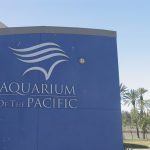
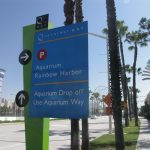
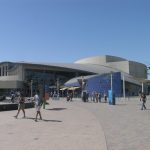


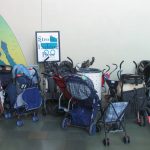
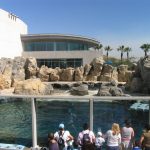
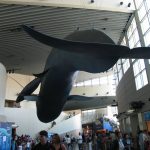


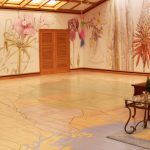
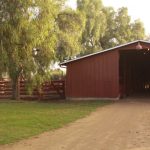

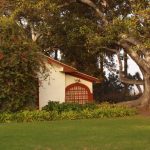
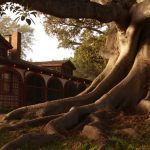

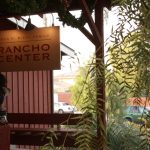

Leave a Reply